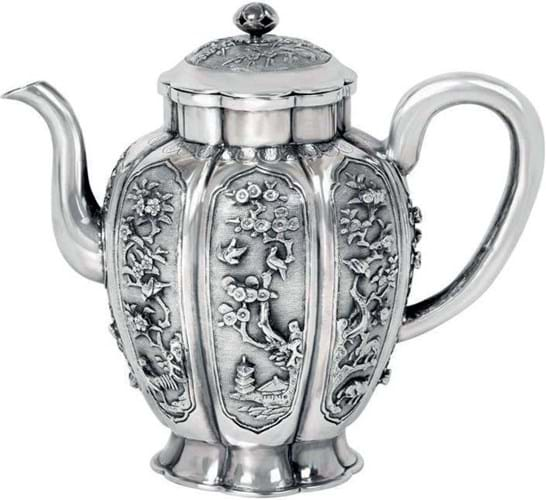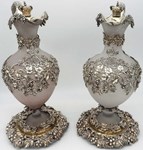Several documentary examples survive including that given to Louis XIV in 1686 by Siamese envoys which was acquired by the Palace of Versailles in 2018.
Serendipity had it that two similar vessels (often called teapots by Europeans) appeared for sale at Tennants (March 18) in North Yorkshire and at Chiswick Auctions (March 23) of west London in the space of a week.
Remarkable object
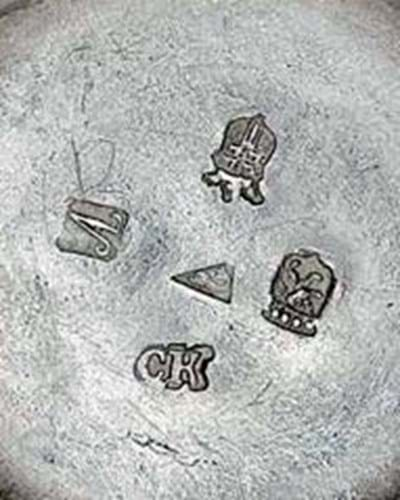
Marks of Chinese silver rice wine ewer, £8000 at Tennants.
The 4½in (11cm) example at Tennants assumed a lobed octagonal form with each panel chased with differing foliage and animals (rabbits, a crane, a rooster and a horse).
It is struck to the base with marks for Cornelis Knuystingh, Rotterdam, 1783 – presumably as an importer but perhaps also as the silversmith who chose to make modifications to a treasure from the East. Chinese silver from this period was typically alloyed with iron. Only spectrographic analysis of the metal content will determine if the spout and handle are Dutch additions.
Estimated at £3000-5000 in Leyburn, this remarkable little object was knocked down at £8000.
Classic elements
The larger 6½in (17cm) parcel gilt wine pot offered at Chiswick was dated to the first half of the 18th century. It has a handle modelled as a branch, with a gilt spout modelled as bamboo and a prunus finial – decorations that a century later were to become classic elements of Chinese export silver.
It apparently came to Europe in the early 19th century as to the base are the marks of the Canton Hong merchant house Tong Tai (operating from 1804-27) and the crowned V denoting the tax paid on its import into the Netherlands.
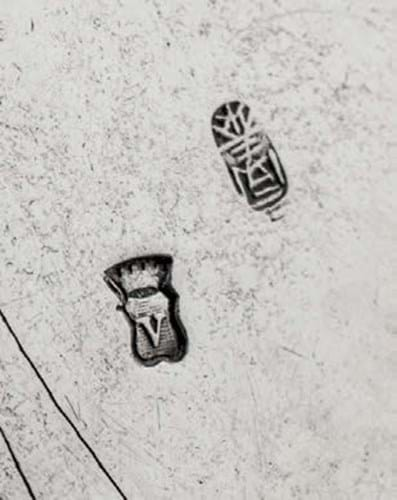
Marks of Chinese silver rice wine ewer, £6000 at Chiswick Auctions.
Estimated at £5000-8000, it sold to a UK buyer at £6000. It had last sold for $5000 as part of a sale of European Silver, Furniture & Ceramics at Sotheby’s New York in 2021.
As discussed by Philippa Glanville in Silver in England (1987), the arrival of Chinese silver in Europe had a huge impact on Restoration and Huguenot silver in particular.
An object that speaks of that moment of cultural exchange is a Kangxi period silver gilt tea bowl c.1700 applied with caryatid handles hallmarked for David Willaume, London 1705.
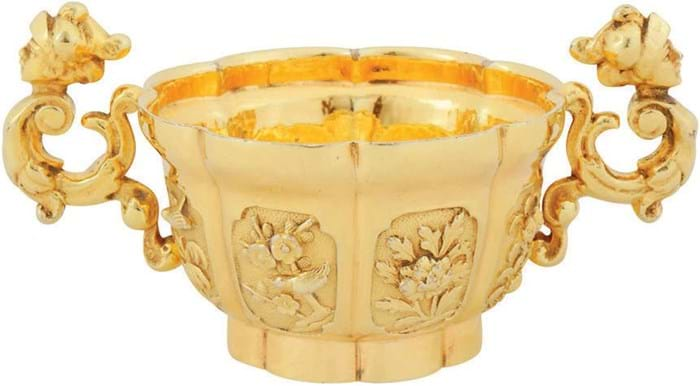
Kangxi period silver gilt tea bowl with Queen Anne Britannia standard handles by David Willaume, £15,000 at Chiswick Auctions.
Why choose to ‘gild the lily’ in this way? As English taste was to serve tea much hotter than it was consumed in the Orient, the addition of two handles helped to reduce heat conductivity while adding a little baroque style.
Several of these hybrids are documented including two (previously with How of Edinburgh) now in the collection of the Aga Khan so they were clearly once part of a set. Spectrographic analysis has confirmed the mix of Chinese and English silver alloys.
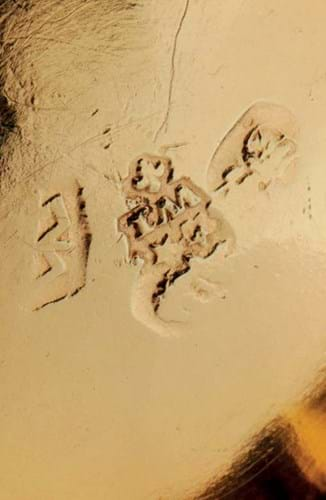
Marks of Kangxi period silver gilt tea bowl with Queen Anne Britannia standard handles by David Willaume, £15,000 at Chiswick Auctions.
The example offered by Chiswick Auctions had appeared at auction in 2002 when Christie’s sold The Selected Contents of Two Great Scottish Houses (Scone Palace and Blairquhan). At the time it was catalogued as all-English work and sold for £15,000. Two decades later, with its new attribution to a rare corpus of Kangxi export silver and estimated at £10,000-15,000, it made the same sum.
The buyer was the Chitra Collection, an extraordinary private museum of historic teawares formed by Nirmal Sethia, the chairman of Newby Teas. The collection, named after Sethia’s late wife, totals almost 2000 objects.
Goblet withdrawn
A goblet thought to combine a Wanli porcelain teabowl with an Elizabethan silver mount previewed in ATG No 2583 was pulled from the sale at the eleventh hour and will now be considered by the Antique Plate Committee.
Rogers said: “The de Pinna cup was withdrawn following the public viewing. This is due to a wide disparity in opinion from several respected academics and members of the trade alongside museums and civic institutions.
“The decision has been taken to subject the cup to scientific testing as well as further consultation with museum authorities. We hope that concluding this additional period of research the cup can be offered again to the open market at a subsequent date.”
£130,000 snake ring
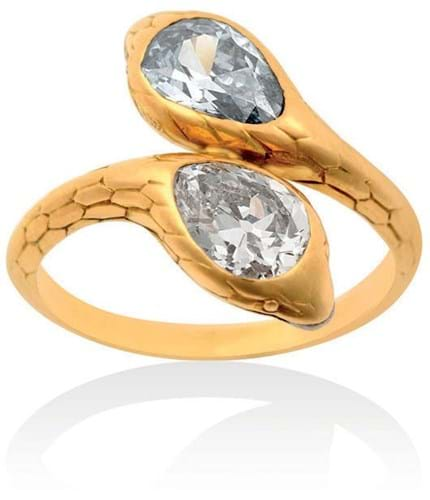
One of the stones to this diamond snake ring was graded as ‘fancy grey blue’. It sold for an unexpected £130,000 at Tennants.
No report of Tennants’ Fine Jewellery, Watches and Silver sale would be complete without reference to the extraordinary bidding battle for a diamond snake ring.
The subject of huge interest from across the world was the pear cut ‘fancy’ coloured diamond set in to one of the serpent heads.
A report from Gemmological Certification Services estimated it to weigh around 1ct, graded the colour as ‘fancy greyish blue’ and the clarity at S1/S2. A rare and desirable stone, it made more than 50 times the mid-estimate when it achieved £130,000.


